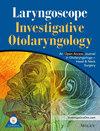The American Cleft Palate Association-Craniofacial Association (ACPA-CPF) recommends regular multidisciplinary team meetings for comprehensive craniofacial patient care, yet standardized meeting guidelines are lacking. Lack of standardization may result in varying quality of care within and between institutions, as well as difficulty in creation of new multidisciplinary craniofacial teams at institutions without one. This study sought to assess craniofacial multidisciplinary team meetings and determine the utility of a meeting guidance tool in such meetings. It was set in a single institution's craniofacial center, and participants included multidisciplinary team members.
This project used the Plan-Do-Study-Act quality improvement method, completed in two phases. In the project's first phase, craniofacial team members assessed their current meetings with an evaluation instrument previously created. The evaluation results identified areas needing improvement, and a new meeting guide was created and implemented over four meetings. Team members also completed a survey comparing historical versus new meeting structures.
Initial meeting quality was perceived positively, but evaluation with a standardized instrument revealed deficiencies, particularly in case presentation topics. Implementing a custom guide improved the provision of current and historical patient information and treatment plan summarization, although excessive repetition persisted. Adjustments to the custom meeting guide led to further quality enhancement, particularly in case presentation efficiency and meeting effectiveness.
Multidisciplinary team meetings are vital for comprehensive craniofacial care, but ensuring consistent quality is challenging. Our study demonstrates the value of utilizing standardized meeting guides to evaluate and create custom guides leading to quality improvement. Ongoing refinement is essential to address persisting issues and optimize patient outcomes.
5.



